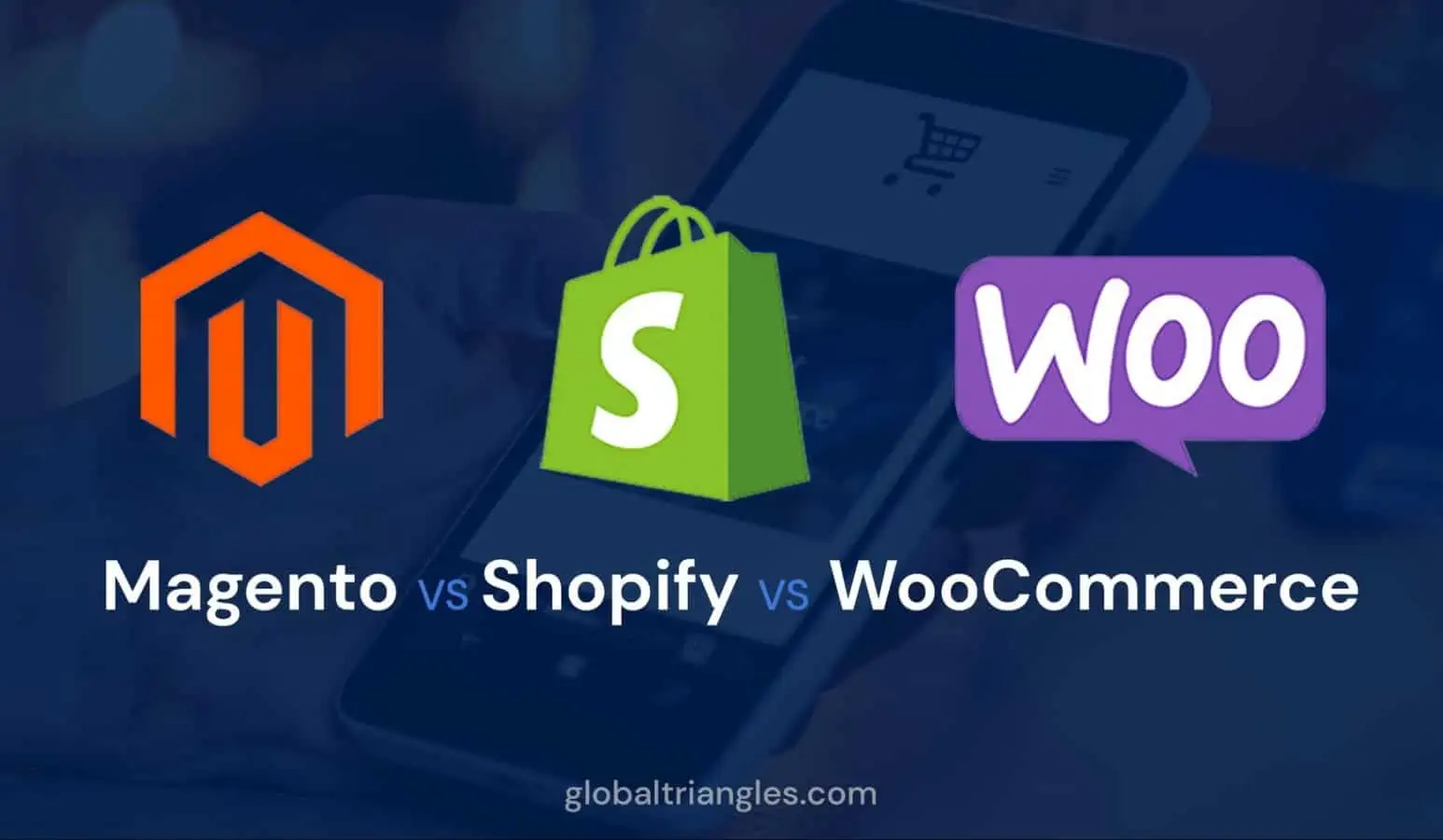Magento vs Shopify vs WooCommerce – which is right for you?
December 16, 2024

If you ever wonder if e-commerce is worth your effort, consider the latest report (November 2024) from the United States Census Bureau: the estimated sales for the third quarter of 2024 via retail e-commerce hit a $300.1 billion high!
According to a report earlier this year, Bank of America suggests that e-commerce will account for 25% of all retail sales by 2027. Put simply, you cannot afford to ignore e-commerce.
However, e-commerce is not without its risks. You may hear of issues with hackers, fraud, frozen payments, and other horror stories. While these problems exist, they are often enabled by poor research and a flawed implementation by the store owner.
By using the appropriate platform for your business, you can avoid being caught out due to ignorance. With over 13.7 million retail e-commerce sites in the US alone, it is a tried and tested way to get sales and boost your profits. But which platform is right for you?
How to choose the right e-commerce platform for your business?
There are many different e-commerce platforms available in the US. However, the top three platforms account for 46% of all online users in the States. The top three sites are Magento, WooCommerce, and Shopify.
These three are the most prominent and safest choices for anyone venturing into e-commerce. And for a good reason.
All three offer their clients a wide variety of features and benefits that allow customizable sites to host online e-commerce sites. They are all strong competitors in the e-commerce market today, and because of that competition and their strong user bases, they are driven to invest more and be the best they can be.
How does this work in your favor? Easy. Their security protocols are tested daily and updated to ensure the highest standards. The functionality they offer has evolved based on the feedback of a significant number of US users to match their customer expectations.
Another important factor is support. Whether that’s the initial implementation, ongoing maintenance, or adding customization, their popularity means that a large number of skilled individuals can offer their expertise – and the competitive market means that the costs are lower than the rarely used or less popular platforms.
All three platforms provide users with a wide range of excellent tools that can be used to enhance customer engagement and online marketing.
As should be expected, they all have pros and cons. This is why it is vital for online business owners interested in starting an e-commerce site to review the pros and cons of each platform. Only then can they make an informed choice on what works for them and what doesn’t. Each business is different, so what may be the ideal platform for one may not suit another.
Overview of Magento, WooCommerce, and Shopify
Magento
Magento, the Adobe-owned open-platform, is most well-known for its scalability, customizability, and dynamic built-in tools. Famous brands such as Ford Accessories, Bulgari, Coca-Cola, Olympus, Asus, and HP use the platform to serve their e-commerce needs, so it is no wonder that Magento has solidified its place as a strong competitor in the e-commerce industry today.
Since its 2007 release, Magento has undergone many changes and improvements, making it a fierce competitor in a rapidly changing industry.
Magento offers an impressive number of built-in features, such as multi-language options and multi-store capabilities. It allows for configuring complex products. Most of these features require plugins or add-ons in the other two platforms.
There are two versions of Magento. Magento Open Source is the easier option to start with and is also known as Magento Community. The other version is Magento Commerce or Magento Enterprise.
Magento Community is free and aimed at smaller (but still large) stores, whereas Magento Commerce has a variable price tag and can manage very large volumes easily, with extra features.
As would be expected, Magento Community is easier to set up. Magento Commerce will require technical skills.
Pros
Magento is rich in features, and its ease of scalability makes it the best option for larger businesses.
It offers, by a wide margin, the most advanced scalability that can be customized to suit a client’s individual needs and goals.
Magento offers a powerful, free, open-source community version.
Among its features are advanced data reporting and metrics of critical insights on orders, customers, and products. Magento Commerce provides complex customer segmentation, which is ideal for marketing and multifaceted products.
Magento has a large, supportive community, making finding resources and answers to questions online relatively easy.
Cons
Investment can be high, especially with Magento Commerce (but you get a level of e-commerce not possible with the other two platforms).
Much depends on your business requirements, but Magento may require more technical expertise than the other two platforms.
As your site grows, you may require additional technical skills and knowledge, although that may also be true of the other two platforms.
Both versions of Magento are advanced yet complex e-commerce systems.
WooCommerce
WooCommerce is an open-source shopping cart plugin designed particularly for WordPress sites. WooCommerce is typically used to create and manage online e-commerce sites. With this software, beginners can turn a regular website into a fully functional online store with the click of a button. WooCommerce users are provided with various tools that can assist with product displays, sales management, and payment gateways. Well-known names include Clickbank and Leggari.
Worldwide, over 6.3 million websites use WooCommerce as their e-commerce platform, giving it around 39% of the global e-commerce market. In the US, there are over 2.8 million WooCommerce sites!
Pros
There are almost limitless add-on extensions that allow site customization. Many are free to use.
Access to the WooCommerce community, tutorials, and help articles. There are many highly skilled WooCommerce developers to fall back on if you want to expand your business direction or customize the store to create a unique user experience.
WooCommerce is free since it is a WordPress plugin owned and maintained by WordPress.
A wide variety of payment gateways are provided, such as PayPal, Stripe, Square, and more, with many regional gateways developed.
Cons
Even though WooCommerce is free, users must pay additional fees to host web domains. Most hosts offer free SSL certificates, but some don’t. The costs for a hosting package may be similar to the monthly fee for Shopify hosting, so it is important to compare costs carefully.
Although there are good free themes and plugins, you may need premium themes or plugins to enhance your store to be how you want. To get a unique look and feel for your online store, you may need customization as well as plugins.
WooCommerce can only be used in conjunction with WordPress.
The platform is an excellent option for small to medium-sized businesses, but you may need additional help handling high sales volumes if your business snowballs.
Shopify
Like WooCommerce, users of Shopify can choose from a wide variety of themes that can be customized to fit their business's needs. And like WooCommerce, one of Shopify's missions is to provide even the most novice users with an easy-to-use interface that puts them in the driver's seat of creating their dream business. The platform also offers developers access to CSS, HTML, and Liquid.
Globally, over 4.6 million e-commerce stores are using Shopify. In the US, over 2.7 million online stores use Shopify.
Pros
Shopify hosts a platform that allows high-level inventory management, which makes shop expansion easier than might be the case with WooCommerce.
The platform allows for selling products/services on several platforms, such as Facebook, Instagram, and eBay.
Shopify is known for its easy design utility and adaptability, providing clients with free and paid themes. Users are also to design their own themes if they wish. It is generally viewed as easier than WooCommerce to set up a basic online store.
Having been designed as an e-commerce site from scratch, most of the basic functions and features needed to make your store easy to use are built into the core system.
There are over 100 payment methods to choose from.
Cons
Users may find the proprietary nature of Shopify, which is a great benefit at the start of the store's life, but later limits integrations and available add-ons when compared to WooCommerce.
Reduced built-in capabilities may require other applications to boost the site.
There are monthly costs from Shopify, which can be expensive but may be comparable to the host's costs needed for WooCommerce.
There are also high transaction fees and other application costs that may be involved and need to be considered. Not all of the costs are obvious upfront.
There is no email storage access provided by Shopify which means the user must find a different provider for setting up an email address for their store.
Shopify provides no email storage access, meaning the user must find a different provider to set up an email address for their store.
Due to the lower number of sites and the need for developers to pay a monthly fee to Shopify, fewer freelancers are in the market than WooCommerce, often making developers more expensive.
The Choice is Yours – but analyze your business before the platforms
Each of these, the three most popular e-commerce platforms, offers value and the opportunity to build a successful online store. Each has its pros and cons. And each has its fans and detractors. To a certain extent, the passion for support of WooCommerce and Shopify might be likened to that of cat and dog owners! Both often hold strong opinions that are subjective.
The best way to make the decision is to start with your business. What is it? What do you want to achieve? Who are your competitors (and what do they use)? And carefully analyze costs – both upfront, future, and hidden. What are your likely volumes? How ‘unique’ is your business? Perhaps a standard theme would be ideal, or maybe it’s so unique it will require customization.
All three platforms are popular for a reason. They have their own set of advantages and limitations. In summary, the ultimate decision comes down to what best aligns with your business’s mission and capacity.
Our choice?
Global Triangles has years of experience with e-commerce, from the small to the very large. We have skills on each of the three platforms.
But if you ask us – without us knowing your business - Magento Commerce could be the stronger competitor due to its advanced scalability, and advanced data reporting. This will provide you with vital insights on how you could advance and maintain the growth of your online business. We have seen e-commerce sites grow rapidly and hit problems due to scalability. Both WooCommerce and Shopify can handle high volumes but not without additional work.
However, if your online store is ‘standard’ (if there is such a thing), with low to medium volumes and normal (and even variable) products, then Magento Community, WooCommerce and Shopify are the platforms you should consider.
If you’re undecided or need more information, feel free to contact us. We can discuss your requirements, expectations, and aspirations and help you choose the right platform. We are experts in our field and happy to share that knowledge and experience with you!



